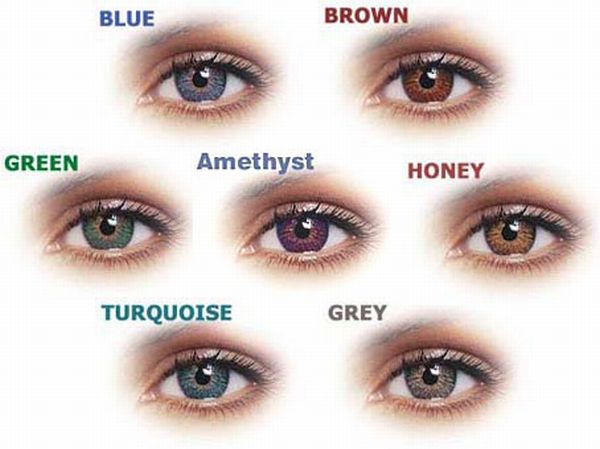
Contact lenses are growing in versatility, so if you are planning to switch to lenses from your regular glasses then it is definitely a great move. Contact lenses today come in various designs and are even capable of correcting impaired vision. The colored contact lenses are more of a fashion symbol today and are growing popular amongst teenagers and fashion conscious gentry. Well, whatever may be your reason of wearing contact lenses but it is very important that you choose wisely so that you can see clearly and also keep upon its maintenance while enjoying absolute comfort. To begin with figure out the pros and cons linked to every type of contact lenses and based on these factors make your right pick.
1. Soft contact lenses
These lenses fit perfectly as per the shape of your eyes. These lenses are thin and almost gel-like. They are fixed well in place and do not cause any discomfort. If you are amongst those people who live a very active life then these lenses are absolutely perfect for you. These lenses can also be used as vision correction tools including conditions like myopia, astigmatism and hyperopia.
These lenses are created for single usage, daily and extended wear types too. The single use lenses are packed for just a single time use which has to be replaced every single day. The used pair is discarded and a new one applied in the morning.
Pros: These entail convenient usage and since they can be used intermittently, therefore, they do not require any sort of cleaning.
Cons: Since they are the best in terms of quality, comfort and reduced risks of infection, therefore, they are typically more expensive then any other contact lenses type.
a. Daily wear
The daily wear lenses are created for regular usage and are meant to be reused until a particular duration as specified by the manufacturer. Daily wear contact lenses can be worn all along the day while they can be removed during the night.
Pros: These are economical and can be repetitively worn along a duration of time.
Cons: They have to be properly cleaned and replaced so as to avoid eye buildups.
b. Extended wear
These soft contact lenses are crafted in a way that they can be worn for long durations which actually is 24X7 for a particular number of days as fixed by the manufacturer.
Pros: The extended wear lenses are meant for constant use, however, they allow limited oxygen to reach the cornea of the eyes so they can be worn even while sleeping – although eye specialists recommend limiting the use of contact lenses.
Cons: Constant use for extended durations gives way to micro-organism build upon the lenses which increases infection rate and other health complications.
2. Hard contact lenses
Hard or rigid gas permeable lenses are more rigid than any soft lens types. This holds particularly true for new users. But these lenses are permeable and allow passage of oxygen to the eye hence reducing the chances of corneal irritation. Gas-permeable lenses also applied for correcting various vision defects including problems of refractive errors, cylindrical and spherical powers and are more effective then the soft lenses.
Pros: These lenses are easy to maintain and are also more durable. Because they allow gases to pass through them, therefore, they are more breathable than the other lenses and are hence less likely to cause eye infections. If well maintained, hard contact lenses can be used for as long as two to three years, if your prescriptions remain the same.
Cons: In the initial phase, hard lenses are uncomfortable. It also takes a lot of time to readjust to the lenses, if you take some time off them. Since they are hard, these lenses are also more prone to slipping off. This condition can be uncomfortable and cause blurred vision.
3. Specialized contact lenses
Specialized lenses can actually be termed as the best to have. Some popular options include:
a. Hybrid contact lenses: These have a center which is permeable by gases and lies within the soft outer ring. These lenses may be a great option, if you have an irregular corneal curvature or if you can wear gas-permeable lenses.
b. Bifocal contact lenses: These include double prescription lenses that are used for correcting both long distance and close distance vision. These lenses correct all major close up-vision issues and are soft, gas permeable and can be worn on a regular basis.
c. Monovision contact lenses: These are those which are meant for reading prescriptions and distance prescriptions. These lenses work best against presbyopia. Modified monovision contact lenses can be worn in a divided way too based on single eye vision corrections.
d. Some lenses are also tinted and can be used against color blindness or for cosmetic purposes. These lenses can however be painful for the eyes and can cause eye infection and inflammations.




